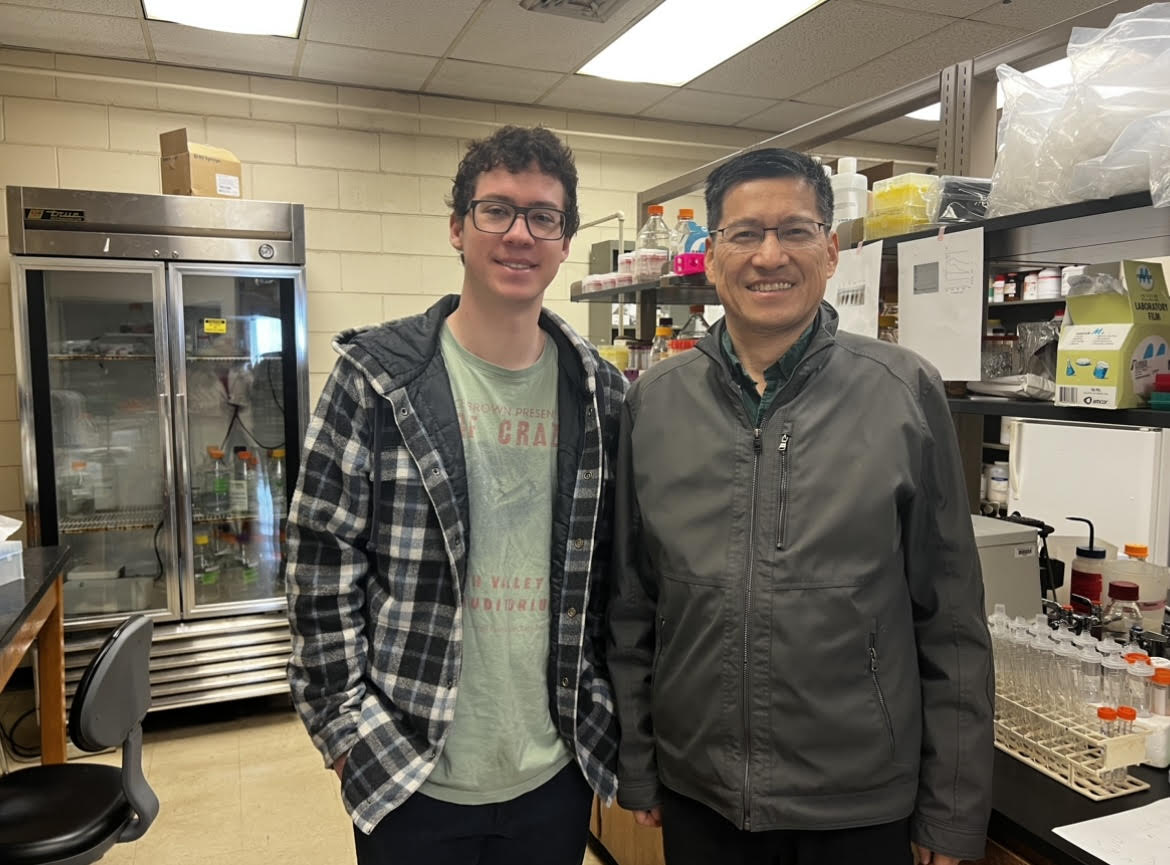LSU Senior Gets Published in Journal of Biological Chemistry
March 18, 2024
LSU Biological Science Professor Dr. Huangen Ding and senior Aidan Purcell spent spring break 2024 in the lab studying what's happening in bacteria.
It involves two proteins in Escherichia coli: the ferric uptake regulator (Fur) which controls intracellular iron homeostasis and IscU which is an iron-sulfur cluster assembly protein in bacteria.

"Fur helps bacteria to regulate intracellular iron content and maintain a proper amount of iron in cells," said Purcell. "Because of that, Fur has been considered an antibiotic target.”
However, over the past thirty years, the mechanism by which Fur senses intracellular ironcontent was not understood. Recent studies in Ding’s lab have demonstrated that Fur binds a unique [2Fe-2S] cluster in response to the elevation of intracellular free iron content. Purcell’s research has further shown that IscU, a key member of the iron-sulfur cluster assembly machinery, is required for the [2Fe-2S] cluster assembly and activation of Fur in bacteria.
The two are making strides as they continue to research the molecular mechanism by which the intracellular free iron is mobilized and delivered for iron-sulfur cluster assembly in proteins. Ding said iron-sulfur proteins are also involved in DNA replication and repair, RNA modification, protein synthesis, co-factor synthesis, energy metabolism and signal transduction, among others.
"The mechanism of how iron-sulfur clusters are formed in proteins has a cascade effect on multiple cellular functions in cells," said Purcell. "For example, cancer cells have a high metabolic activities that require many iron-sulfur proteins."
Ding's studies have revealed that iron-sulfur cluster biogenesis not only requires iron delivery from the intracellular iron pool but also regulates intracellular iron homeostasis in cells. The current goal of the project is to determine the interplay between iron-sulfur cluster biogenesis and intracellular iron homeostasis in bacteria.
Purcell received the highest grade in Ding's spring 2023 semester.
"He spent the summer working in the lab," said Ding. "He's been constantly working in the lab and he's here for spring break. We are very excited about this project and are trying to understand the molecular mechanism of how intracellular iron content is regulated in bacteria."
"From what I've learned the last year, I would say what gave me a lot of success in research is working a lot and then asking a lot of questions," said Purcell.
Purcell's findings were recently published in The Journal of Biological Chemistry.